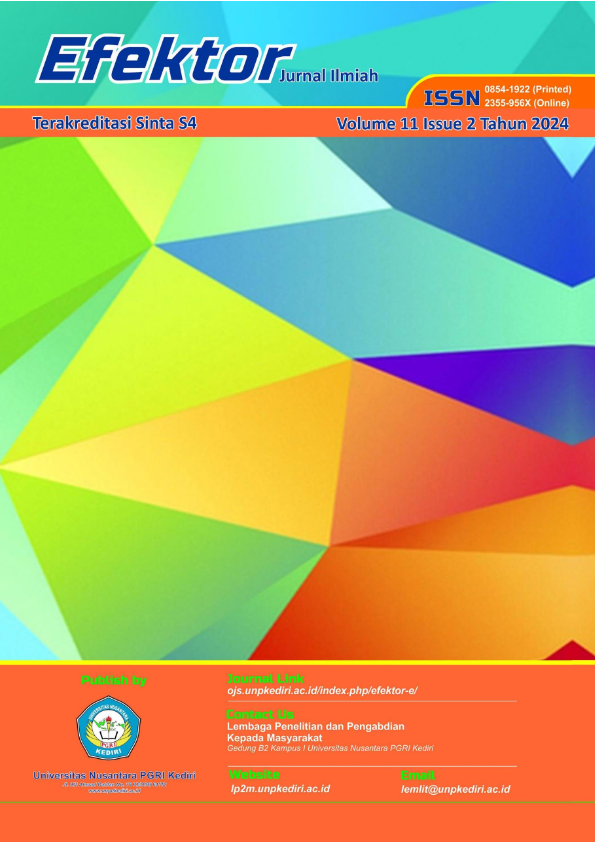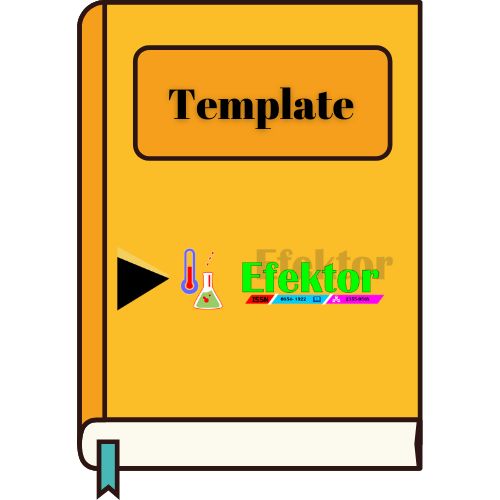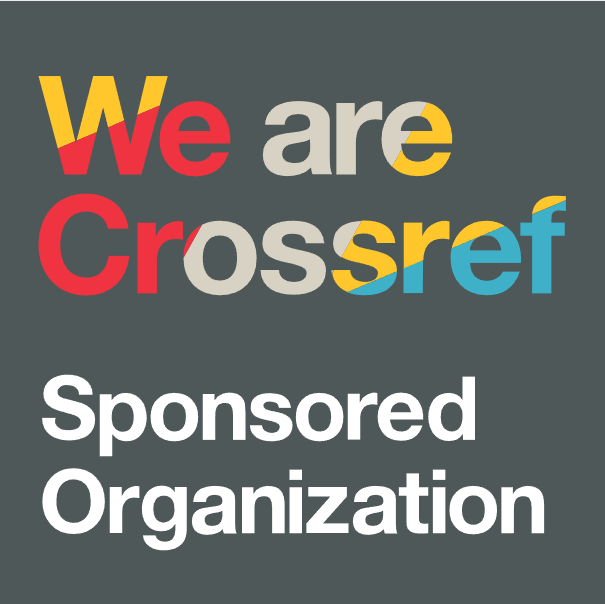The Effect of Morally Contained Animated Video on Independence in 5-6 Years Old
DOI:
https://doi.org/10.29407/e.v11i2.23805Keywords:
Animation Videos, Independence, Early ChildhoodAbstract
A spectacle is often used as guidance, one of the positive and educational spectacles is an animated video. Through video animation children not only fantasize or imagine, but can see and imitate it. The formation of independence is very important, because if taught from an early age it will be well embedded. Therefore, the provision of animated videos can be done to stimulate independence in early childhood. The purpose of this study was to determine the effect of video animation on independence in children aged 5-6 years. This study uses quantitative research with pre-experimental design. The method used is one-group pretest-posttest design. There is a positive influence of video animation on the independence of children aged 5-6 years. The difference in the results of the average ability of children before and after treatment using video animation is 11.29, meaning that video animation can be used as a learning medium to stimulate independence in children aged 5-6 years.
References
Anggraeni, Y. Y., Kurniawati, A. B. (Universitas L., & Pradini, S. (Universitas L. (2023). Hubungan Kelekatan Aman Anak Pada Orangtua dengan Kemandirian Anak Usia 4-5 Tahun. Jurnal Tunas Siliwangi, 9, No.2, 53.
Fatimah, E. L., Yulianingsih, Y., & Syam’iyah. (2020). Kemandirian Anak Usia Dini dengan Penggunaan Media Film Animasi “Nussa dan Rara.” Murhum : Jurnal Pendidikan Anak Usia Dini, 2, 74–83. https://doi.org/10.37985/murhum.v1i2.10
Firdausa, I. B. (2017). Analisi Faktor-Faktor Kemandirian Anak Usia Prasekolah (3-4 Tahun) Yang Di Titipkan Di Tempat Penitipan Anak.
Fitriani, R., & Rohita, R. (2019). Penanaman Kemandirian Anak Melalui Pembelajaran Di Sentra Balok. Jurnal Al-Azhar Indonesia Seri Humaniora, 5(1), 1. https://doi.org/10.36722/sh.v5i1.324
Kustandi, C., & Sutjipto, B. (2013). Media Pembelajaran Manual dan Digital (Bogor). Ghalia Indonesia.
Nawangsasi, D. (Universitas L., Lampung), N. (Universitas, & Kurniawati, A. B. (Universitas L. (2022). Peningkatan Kemandirian Anak Usia Dini Melalui Program Pengembangan Kemandirian. El Athfal, Jurnal Kajian Ilmu Pendidikan Anak, 2, No. 2, 114.
Nurdiana, A. S., Hanafi, S., & Nulhakim, L. (2021). Pengembangan Media Video Pembelajaran Animasi Berbasis Kinemaster Untuk Meningkatkan Efektivitas Pada Mata Pelajaran IPA Siswa Kelas IV SDN Kedaleman IV. Primary: Jurnal Pendidikan Guru Sekolah Dasar, 10(6), 1554.
Permendikbud RI. (2014). Kemendikbud RI.
Rantina, M. (2015). Peningkatan Kemandirian Melalui Kegiatan Pembelajaran Practical Life (Penelitian Tindakan Di TK B Negeri Pembina Kabupaten Lima Puluh Kota,Tahun 2015). Pendidikan Usia Dini, 9(2), 181–200.
Riadi, M. (2020). Kemandirian (pengertian, aspek, jenis, ciri, tingkatan dan faktor yang mempengaruhi).
Rizkyani, F., Adriany, V., & Syaodih, E. (2019). Kemandirian Anak Usia Dini Menurut Pandangan Guru Dan Orang Tua. Edukids, 16(2), 121–129. https://doi.org/10.17509/edukid.v16i2.19805
Sukatin, Karmila, P., Marini, Riskcy, H. N., Nursavitri, R., & Saumi, P. V. (2019). Mendidik Kemandirian Anak Usia Dini. VI, 172–184.
Downloads
Published
Issue
Section
License
Authors who publish with this journal agree to the following terms:
- Copyright on any article is retained by the author(s).
- The author grants the journal, the right of first publication with the work simultaneously licensed under a Creative Commons Attribution License that allows others to share the work with an acknowledgment of the work’s authorship and initial publication in this journal.
- Authors are able to enter into separate, additional contractual arrangements for the non-exclusive distribution of the journal’s published version of the work (e.g., post it to an institutional repository or publish it in a book), with an acknowledgment of its initial publication in this journal.
- Authors are permitted and encouraged to post their work online (e.g., in institutional repositories or on their website) prior to and during the submission process, as it can lead to productive exchanges, as well as earlier and greater citation of published work.
- The article and any associated published material is distributed under the Creative Commons Attribution-ShareAlike 4.0 International License













